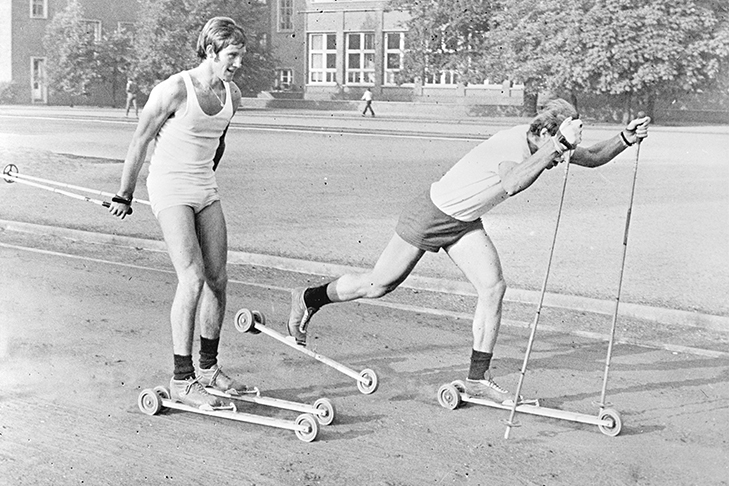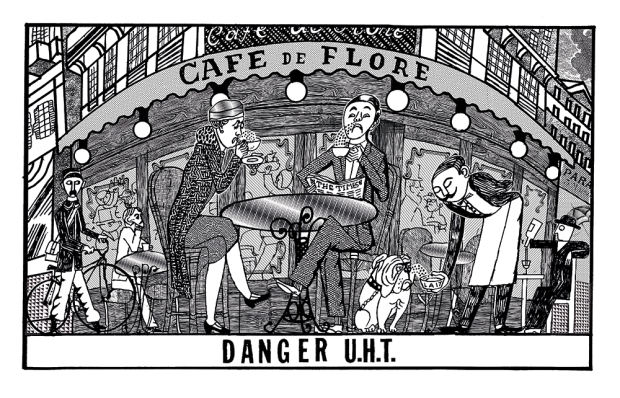There’s trouble brewing in the Alps. Skiers arriving in the mountains over Christmas were greeted, not by snow-clad chalets and oodles of fresh powder, but by thin ribbons of artificial snow snaking down green mountainsides.
For the fourth time in as many years, the ‘white gold’ had failed to materialise. Whether climate change is to blame is anyone’s guess (I’m no scientist), but it’s certainly a worrying pattern. Parts of the Alps experienced their driest December in 150 years, and in many French resorts the only snow for Christmas was artificial.
Initially it looked as though holidaymakers had learnt their lesson. Until this year’s unseasonably early November snowfalls, tour operators could hardly shift Christmas holidays — even with up to 50 per cent off. The fear of brown slopes, like the ones seen in recent years, was too great. In the storm’s wake bookings spiked, but that was it for snowfall. Switzerland endured its driest December in 150 years; the French Alps the worst for 130 years. The adage ‘snow in November doesn’t mean snow in December’ rings ever true.
There hasn’t always been such demand for Christmas skiing. The early ski pioneers certainly didn’t expect guaranteed snow from early December till April. But as tourism boomed and the small farming villages transformed into big businesses, resort bosses looked to offer ever-longer ski seasons.
But ski resorts’ greed — even with improved snowmaking capabilities — shouldn’t be to the detriment of a great skiing holiday. Forget December, forget Christmas, and even New Year for that matter. Skiing later in the season is the real treat. Regardless of what happens over the festive period, the snow will materialise; it always does. It may come soon afterwards, as it did in Switzerland and Austria, or it may take a little longer (resorts clustered near Geneva are still in dire need of a big dump). The usual rules still apply: head high (resorts such as Val Thorens, Les Deux Alpes and Saas-Fee all virtually guarantee snow) and, if possible, book late to secure a resort where you know there’s snow.
So far this year the ski season has been saved by snow cannon. Skiing is, for the time being, limited mostly to the pistes, but a few decent snowfalls will change everything. The stones showing through on the pistes will disappear, and off-piste routes will open — albeit with a high avalanche risk.
Even better, the slopes will be deserted. The Three Valleys over Christmas were a war zone, with skiers fighting for space on the limited slopes and a crush at the lifts. Now they have all gone home and what’s left are wide-open slopes with hardly a soul in sight. There’s no waiting for ski lifts and it’s possible to get a table for lunch at even the best restaurants without a reservation.
School-age children? Either leave them at home (you’ll have more fun and need half the clobber) or go at Easter when the sun and longer days make skiing twice as enjoyable.
And what if there is still no snow? Even without snow, the mountains are a damn sight more appealing than the Waterloo and City line. Clean fresh air, sun and lofty peaks — you’re guaranteed a good time.
But get there fast; the crush returns for February half-term (which, predictably, lasts three weeks in France).
Got something to add? Join the discussion and comment below.
Get 10 issues for just $10
Subscribe to The Spectator Australia today for the next 10 magazine issues, plus full online access, for just $10.
You might disagree with half of it, but you’ll enjoy reading all of it. Try your first month for free, then just $2 a week for the remainder of your first year.














Comments
Don't miss out
Join the conversation with other Spectator Australia readers. Subscribe to leave a comment.
SUBSCRIBEAlready a subscriber? Log in